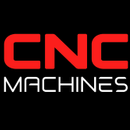Exploring Aerospace Engine Mounts: Types, Manufacturing, and Applications

Aerospace Engine Mounts: Types, Manufacturing, and Applications
In the world of aerospace engineering, engine mounts play a critical role in safely securing propulsion systems to an aircraft or spacecraft. Whether it’s a commercial airliner’s turbofan engine or a space-bound rocket booster, these mounts must withstand immense stress, vibrations, and thermal changes without compromising overall performance. Below, we explore the various types of aerospace engine mounts, how they are manufactured, and the key applications that underscore their importance in modern flight.
The Function and Importance of Engine Mounts
Engine mounts provide a structural interface between the powerplant and the airframe (or fuselage), ensuring that thrust and vibrational loads are transmitted correctly while minimizing stress. In addition, well-designed mounts isolate the rest of the vehicle from excessive engine vibration or temperature fluctuations. By helping maintain precise engine alignment, they also contribute to efficient thrust production and overall stability during flight.
Types of Aerospace Engine Mounts
1. Fixed Engine Mounts
Fixed engine mounts are commonly found in small general aviation aircraft and some rotorcraft. Constructed from welded steel tubes or high-strength aluminum frames, these mounts bolt the engine rigidly to the firewall or airframe.
- Design Simplicity: Ideal for lower-powered piston aircraft, where ease of manufacturing and maintenance is a priority.
- Vibration Management: Vibration dampeners or rubber isolators may be added to limit airframe stress and cabin noise.
2. Cradle or Wrap-Around Mounts
Cradle mounts secure the engine along the sides and underside, forming a “wrap-around” structure. This style is frequently used in high-performance piston and turboprop aircraft requiring robust load distribution.
- Load Distribution: By encompassing the engine, these mounts spread stress more evenly, reducing concentrated points of failure.
- Easy Access: Wrap-around designs typically leave the top of the powerplant open, allowing for more straightforward inspection and routine maintenance.
3. Modular Engine Mounts
Some modern airliners and business jets employ modular mounts, consisting of multiple sub-assemblies or trusses. This approach simplifies manufacturing and maintenance by allowing technicians to remove or replace individual modules rather than the entire mount structure.
- Scalability: Different aircraft variants can incorporate tailored modules depending on engine size or configuration.
- Flexibility: Swapping engine options becomes more feasible, a benefit for fleet operators wanting standardized airframes.
4. Pylon and Strut Mounts
Large commercial jets typically feature pylons or struts extending from the wing or fuselage, supporting the turbofan engine. These structures often integrate advanced vibration dampening and thermal shielding.
- High Thrust Compatibility: Designed to accommodate the colossal thrust of modern turbofans.
- Aerodynamic Design: Engine pylons are aerodynamically shaped, reducing drag and contributing to the wing’s lift characteristics.
5. Thrust Frame Mounts (Rocketry)
In rocket or space applications, thrust frames anchor the rocket engine to the vehicle’s main structure. These mounts must endure extreme combustion chamber pressures and intense vibrations during launches.
- Ultra-High Load Capacity: Built to handle both thrust and dynamic forces from steering (gimbaling) nozzles.
- Heat Resistance: Often made of exotic alloys or composite materials to cope with high-temperature exhaust.
How Aerospace Engine Mounts Are Made
Material Selection
Engine mounts must be lightweight yet strong, so engineers often choose high-strength alloys (e.g., titanium or aluminum), heat-treated steels, or composite laminates. Corrosion resistance, fatigue life, and thermal properties also factor into material decisions.
Forming and Forging
Many mounts begin as forged or extruded metal shapes to improve grain structure and maximize strength-to-weight ratios. Large pieces can then be cut or milled into more precise geometries.
Precision Machining
Computer Numerical Control (CNC) machines handle drilling, milling, and shaping processes with micrometer-level accuracy. This is especially important for critical interfaces where the mount attaches to the airframe or engine, ensuring consistent alignment and minimizing stress concentrations.
Welding and Assembly
Where multiple sub-parts come together—such as in cradle or modular mounts—welding and bolting operations are performed under strict quality controls. Non-destructive testing (NDT), including X-ray or ultrasonic inspection, verifies weld integrity and identifies any hidden flaws.
Surface Treatments and Finishing
Protective coatings like anodizing, passivation, or specialized paints safeguard engine mounts from corrosion and wear. Painted or coated surfaces also aid in visual inspection to spot potential cracks or stress lines during routine maintenance.
Applications and Usage
- General Aviation: Small single- or twin-engine aircraft typically use simpler welded steel tube mounts due to cost-effectiveness and ease of repair.
- Commercial Airliners: Larger jets rely on sophisticated pylon assemblies designed for high thrust loads. Specialized vibration dampening within these mounts reduces cabin noise and structural fatigue.
- Military and Defense: Fighters, cargo planes, and helicopters may adopt modular designs for quick engine swaps during combat or rapid deployment scenarios.
- Space Launch Vehicles: Thrust frames and rocket engine mounts endure some of the highest loads in aerospace. Advanced alloys and composites are used to achieve reliable performance in highly dynamic conditions.
Looking Ahead
With ongoing advancements in materials science, manufacturing techniques, and engine technology, the future of aerospace engine mounts will likely involve even greater use of composite materials, 3D-printed components, and integrated sensors for real-time health monitoring. These developments will enable lighter, stronger, and more adaptive engine mounting systems, helping commercial and military aviation respond to demands for improved efficiency, reduced noise, and enhanced safety.
Conclusion
Aerospace engine mounts are a linchpin in ensuring that aircraft—from small single-prop airplanes to giant commercial jets—can safely generate and transfer propulsion forces. By selecting the right design and materials, and by leveraging advanced processes like precision forging and CNC machining, manufacturers can deliver robust, lightweight mounts that uphold the exacting standards of the aviation sector. As propulsion systems continue to evolve, so too will engine mount technology, maintaining its critical function at the heart of modern flight.


